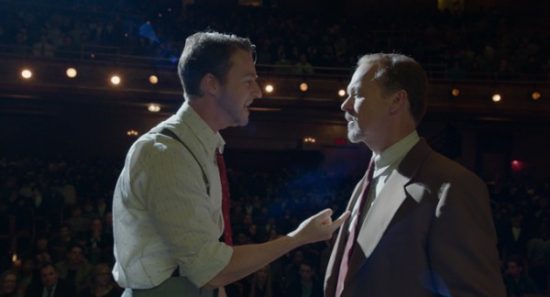What Do We Talk About When We Talk About Birdman
The very first image in Birdman is a blink-and-you’ll-miss-it frame of beached jelly fish – followed by a meteor burning through the sky. An omen? A metaphor for the fleeting nature of fame? We’ll never know. It’s a scene that perfectly sets the tone for a movie that toes a blurry line between reality and insanity – Birdman raises many questions, but it’s not interested in giving answers.
And in many ways, that’s fine by me. We could write ourselves into knots trying to unravel the layers of meaning, or understand which scene is real, which imagined, and whether or not the movie ends that way – you know, that way.
But honestly, I’m not that bothered. To me, Birdman is a movie that is at its most successful when is not trying to push a message – the bombastic storytelling of super-heroes movies, social media, or the power struggles between artists and critics – but rather when it embraces its own baffling surrealism with abandon. Take the fact that the movie seems to be shot in a single take. I’m aware of the significance of filming what looks like a single take (but in fact isn’t) in a movie which is all about the illusions (and delusions) of reality. That’s all good and well, but at the end of the day I’m more interested in how it works.
And it works brilliantly.
Aptly for a story about the trials of staging a Broadway play, the camera work gives the story a very theatrical quality: the transition from scene to scene is handled by plunging a part of the screen into darkness while simultaneously spotlighting another. Just like in the theatre, Iñárritu cleverly gets the viewers to look right, while the stage is being re-arranged on the left: there are misty fade-to-blacks (or fade-to-blues, mostly); POV shots following the characters as they walk from the stage into real life and then back into the fiction again; and broad camera arcs that move from character A now, to character A later. This is perfectly complemented by the jazz score and by what I suspect was a rather unscripted approach to the dialogue, almost a canovaccio. It works because the acting in this movie is incredible. Yes, Edward Norton and Michael Keaton are in exceptional form, but every single actor kills it, and a lot of credit again goes to Iñárritu, for enticing such raw performances and for not being afraid to select daring takes, even when the actors trip on a word or inexplicably pluck a dandelion from its vase to make a point about critiquing.
It all adds to the overall surreal feeling, mimicking Riggan’s descent into madness, making us feel confused about what is real and what isn’t. It’s a powerful experience, and for me that’s what makes the movie. The fact that it lends itself to multiple viewings and endless on-line forum discussions is a delectable bonus.










